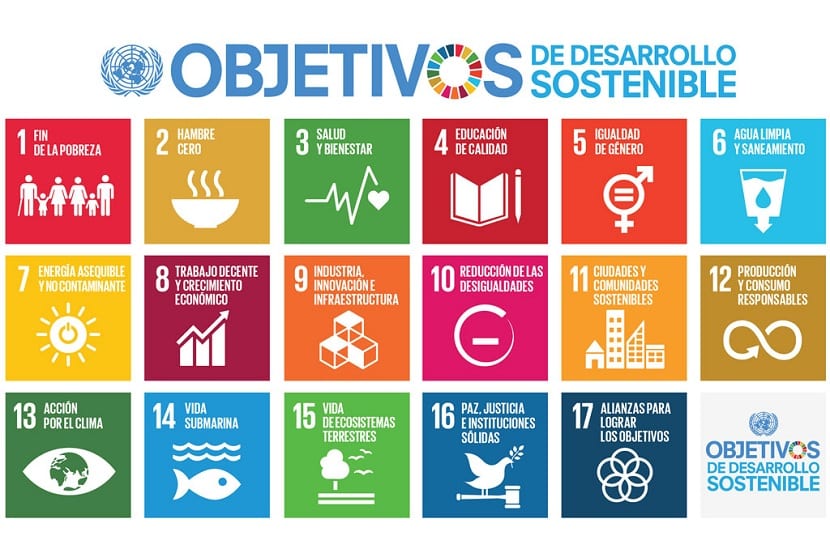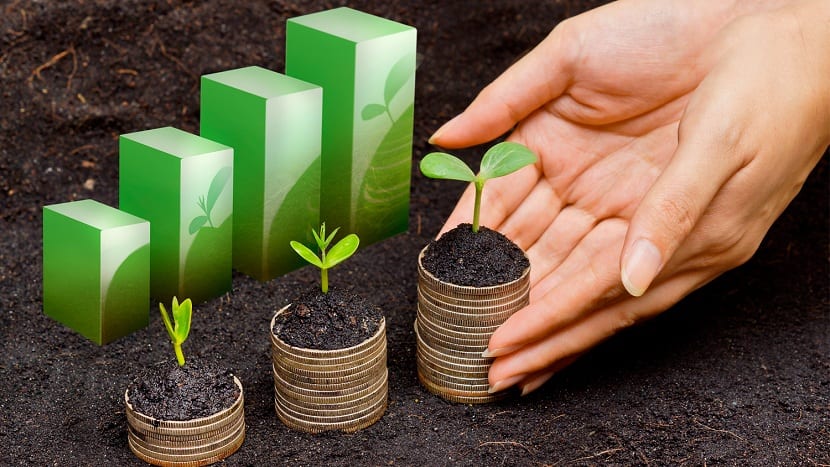
Sustainable development is a concept that surely we have all heard about it. As defined, it seems that it is a development of the population aimed at a future that can be self-sustaining in time. However, as often happens in cases where everyone uses the term, the exacerbated use of it leads to abuse to the point of distorting the original and primitive meaning.
Do you want to know what is sustainable development and everything related to it?
Origin of sustainable development
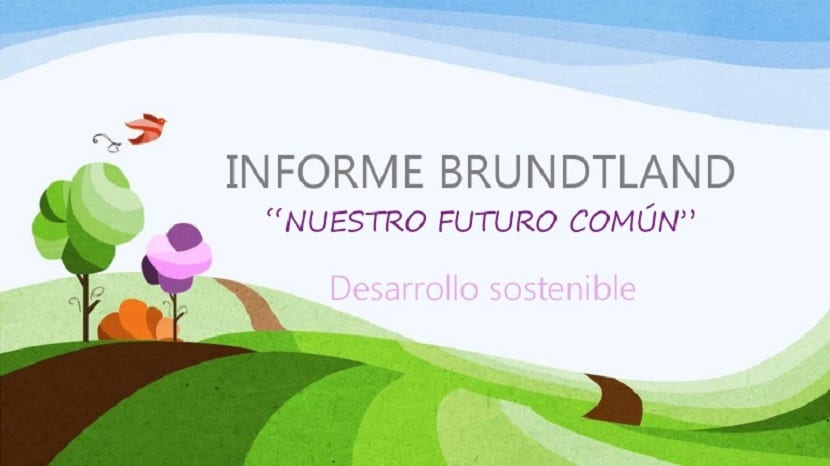
Starting in the 1970s, scientists began to realize that many of their actions produced a minimal impact on natureTherefore, some specialists pointed out the evident loss of biodiversity and developed theories to explain the vulnerability of natural systems.
One of the most prominent characteristics of our era is globality as the common framework and destiny of all human beings. In other words, whether we are from one country or another, we all belong to the same planet, with finite natural resources, with a finite space that we have to share.
Thanks to the media and technology, we can all be well informed about what is happening anywhere in the world. In addition, the development of industries and the discovery of fossil fuels has allowed us, in just 260 years, to prosper at very high levels.
In 1987 it was issued the Brundtland report (originally called "Our Common Future") by the UN World Commission for Environment and Development, which defines sustainable development as that development that seeks to meet the needs of present generations without compromising the possibilities of the generations of the future to attend to their own needs.
The purpose of this report was to find practical means to reverse the world's development and environmental problems, and to achieve this they spent three years in public hearings and received more than 500 written comments, which were analyzed by scientists and politicians from 21 countries and different ideologies.
Characteristics of sustainable development
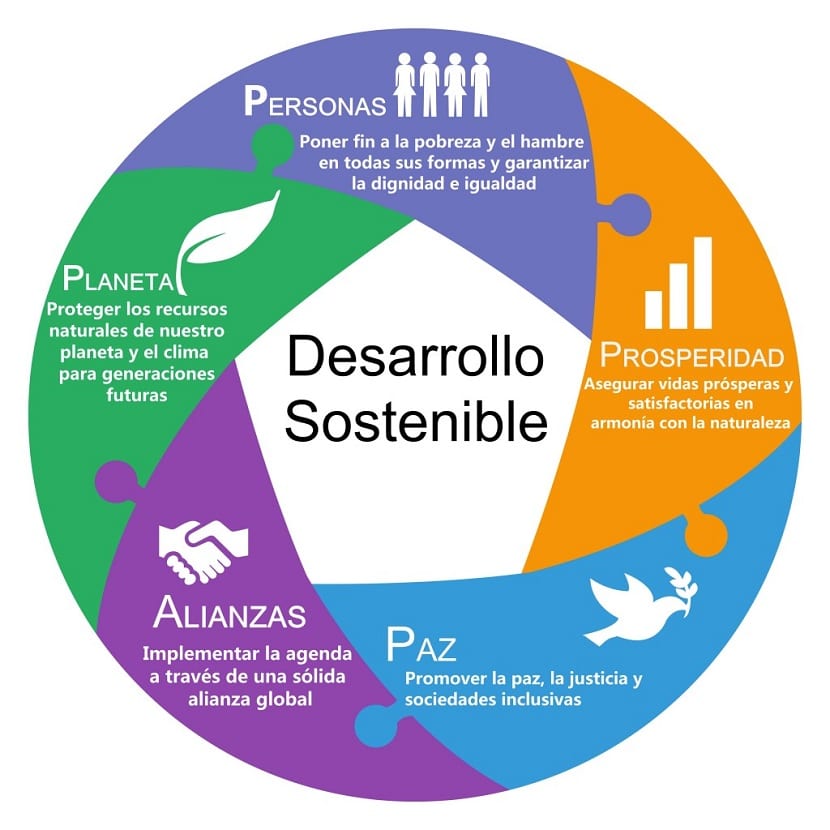
Sustainable development works looking for a balance between the three basic pillars: ecology, economy and society. A development that is sustainable over time has to have a balance between the protection of the environment and living beings, it has to help in the improvement of the economy of the countries and at the same time, contribute to the development of modern society, without problems such as inequality, racism, gender violence, etc.
For a country to have a stable development and society to advance and prosper, it is necessary that basic social needs such as food, clothing, housing and work are met, since if social poverty is spreading or is something usual, the other two areas of action cannot be developed.
As development and social well-being are limited by the technological level, the resources of the environment, and the capacity of the environment to absorb the effects of human activity, we have to act according to what we have available and do not exhaust resources. Unlimited growth it is something unviable, since our planet is finite.
Faced with this situation, the possibility of improving technology and social organization is raised, so that the environment can recover at the same rate that it is affected by human activity, in order to avoid a deficit of resources.
An economic and social development that respects the environment
Given that our development must be linked to an improvement of the three basic pillars (economy, ecology and society), the objective of sustainable development is to define the most viable projects that can reconcile the economic, social and environmental aspects of human activities and improve them without destroying the planet or depleting resources.
All entities in the world (both people and companies, associations, etc.) must take these three pillars into account when generating plans, programs and projects, since if we want to continue with our standard of living and maintain it for future generations , we have to conserve our resources.
The idea that a country can grow economically without limits and without sacrificing anything it's a utopia. Until now, our society bases its energy generation on the burning of fossil fuels such as oil, natural gas or coal. This way of acting and growing economically, pollutes our atmosphere, waters and soils and, in turn, causes a depletion and deterioration of natural resources.
With the development of clean and renewable energy technology, dependence on fossil fuels has decreased. However, it is still not enough to totally delink our economy from fossil fuels. Therefore, the way forward for all countries is that of an energy transition based on a decarbonized and renewable energy economy.
Environmental issues addressed by sustainable development
The importance of creating long-term conditions that make possible a well-being for current generations that is not done at the price of a threat or deterioration of the future living conditions of humanity is unquestionable. Therefore, sustainable development takes into account environmental issues of vital importance and that affect the three fundamental pillars.
The Earth Charter is a report that declares the global ethics that a sustainable world must have and presents a comprehensive and comprehensive articulation of the values and principles related to sustainability. This was issued for a period of 10 years, which began at the Rio Janeiro Summit in 1992.
The legitimacy of the Earth Charter comes precisely from the participatory process in which it was created, as thousands of people and organizations from around the world participated to find those shared values and principles that can help societies to be more sustainable. Even today, there are many organizations and individuals who use this letter to educate on environmental matters and influence local politics.
On the other hand, the Universal Declaration on Cultural Diversity (Unesco, 2001) delves into the need we have to be nurtured in terms of cultural diversity as well as in the environment and biological diversity. In order to understand all the functioning of living organisms, one has to know the history of the human being, since we have influenced the development of ecosystems.
Therefore, it could be said that cultural diversity becomes one of the roots of development understood not only in terms of economic growth, but also as a means to achieve a more satisfactory intellectual, emotional, moral and spiritual balance. In other words, it becomes a fourth pillar of sustainable development.
Types of sustainability
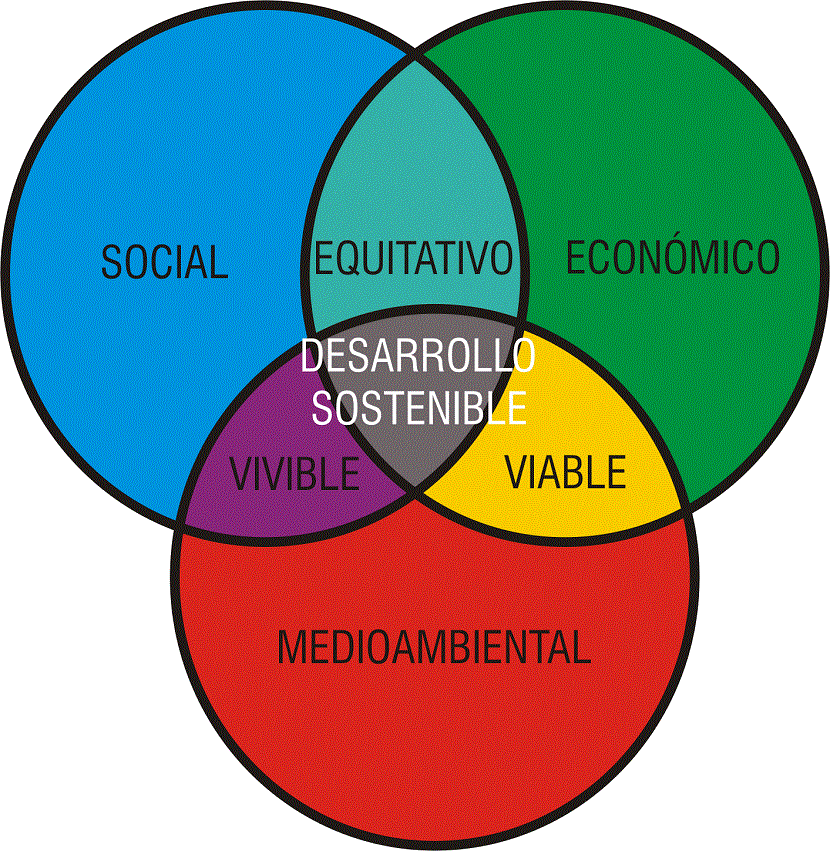
Depending on the area in which a country's activities are focused, sustainable development will be spearheaded in one way or another.
Economic sustainability
This sustainability occurs when the activities of a place are aimed at environmental and social sustainability. It tries to harmonize social and environmental problems in a profitable and financially possible way.
Social sustainability
When we speak of social sustainability we refer to the maintenance of social cohesion and the skills of workers to pursue common development objectives. To do this, they have to eliminate all negative social impacts that cause the different activities and enhance the positive ones. It is also related to the fact that local communities receive benefits for the development of the activity carried out to improve their living conditions.
Environmental sustainability
It is the one that tries to reconcile economic development with the preservation of biodiversity, ecosystems and natural resources. Our activities generate negative impacts that degrade ecosystems and destroy the habitats of thousands of species, causing an impoverishment of biodiversity. Therefore, environmental sustainability tries to find a balance between the economic development of a country through economic activities that minimize impacts on the environment and restore what has already been degraded.
Limitations
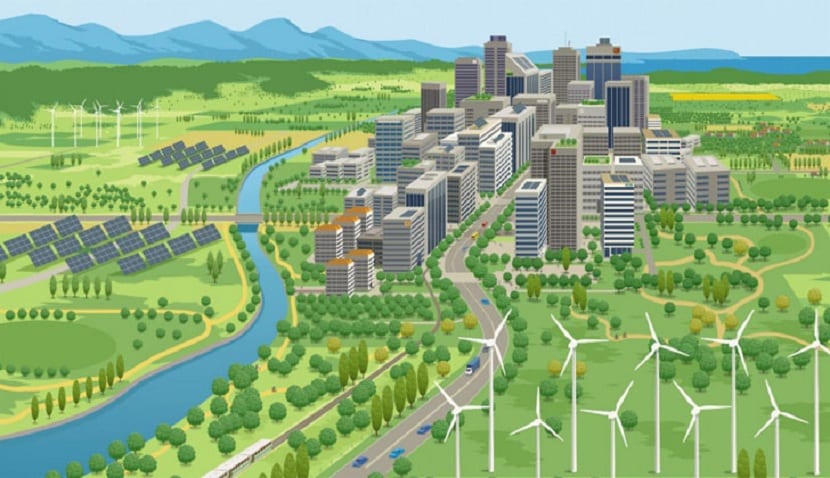
Sustainable development sometimes pursues goals that are unattainable for some. For example, in the field of energy, it is true that the more energy efficiency you have and the more clean energy you have, the less damage industries will do to the environment. However, to develop efficient industries and factories, it is necessary a technological development that is not cheap, so it is not so accessible to all countries in the world.
For countries with fewer financial resources, an environmentally friendly state-of-the-art plant with high operating costs is less sustainable than a conventional power plant, even if it is more efficient from an environmental point of view. For this reason, the least developed countries they are not in favor of sacrifice which has to limit economic growth as a result of the exploitation of the environment.
To alleviate all these problems of equality and the economy, the site "Sustainable development in a diverse world" works in this direction by integrating multidisciplinary capacities and interpreting cultural diversity as a key element of a new strategy for sustainable development.
With this information you will be able to know everything related to sustainable development every time you see it.
